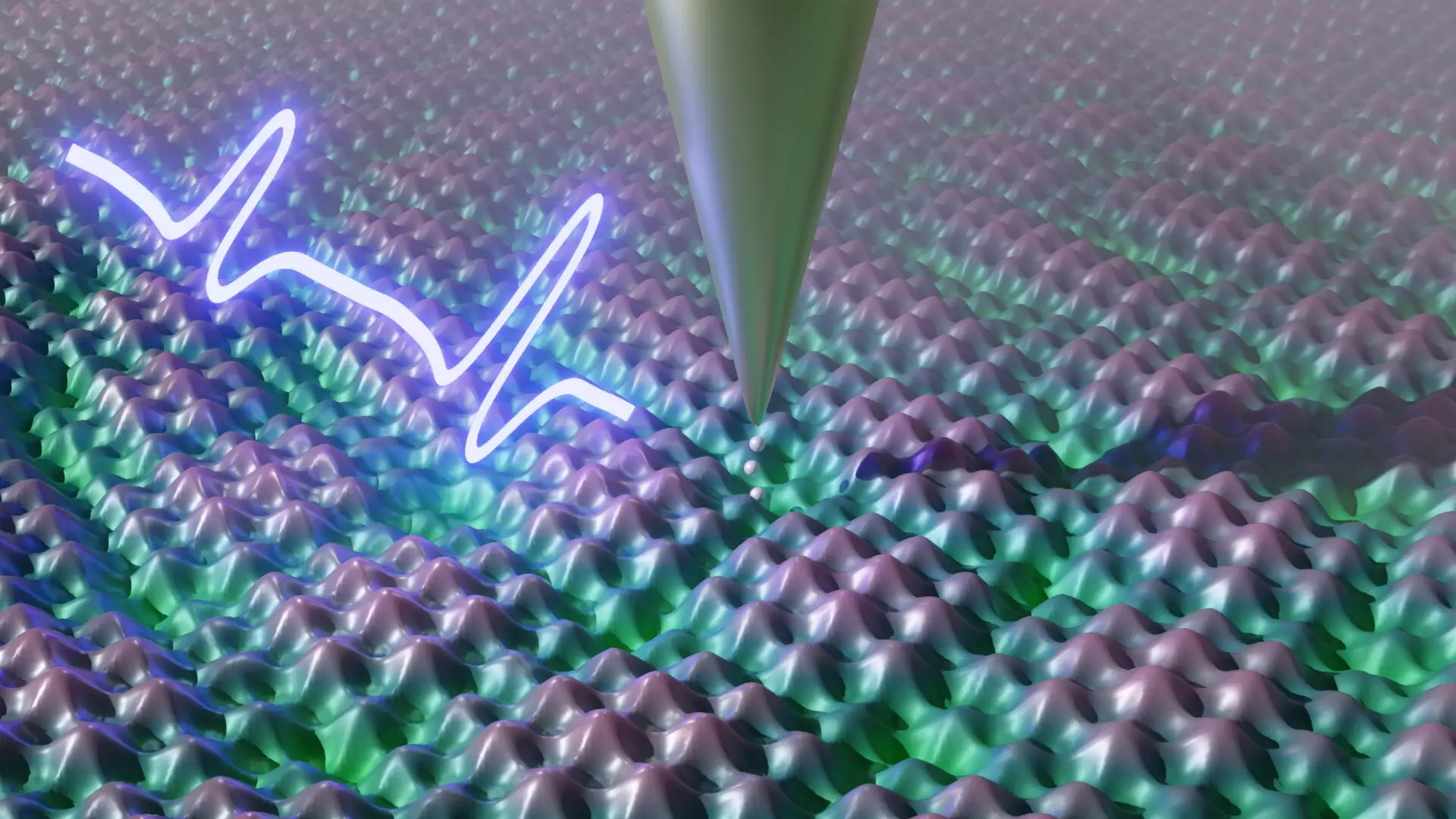Physics researchers at the University of Stuttgart, led by Prof. Sebastian Loth, have embarked on a groundbreaking journey in the realm of quantum microscopy. Their innovative approach allows them to capture the intricate movements of electrons at the atomic scale with unparalleled precision in both space and time. This method holds the promise of revolutionizing material development by granting scientists the ability to tailor materials in a more targeted fashion than ever before.
The study, recently published in Nature Physics, sheds light on long-standing questions pertaining to electron behavior in solids that have remained unanswered since the 1980s. In traditional materials like metals, insulators, and semiconductors, the correlation between atomic structure and macroscopic properties is relatively straightforward. However, in complex laboratory-fabricated materials, subtle atomic alterations can give rise to entirely novel macroscopic behaviors. For instance, a slight modification at the atomic level can transform an insulator into a superconductor capable of conducting electricity without any loss of heat.
The research team, spearheaded by Prof. Loth, has devised a method to observe these rapid transformations at the atomic level in real-time. By studying a unique material composition of niobium and selenium, the scientists have delved into the collective motion of electrons known as a charge density wave. Their experiments involve applying a precisely timed electrical pulse lasting just a picosecond, thereby inducing intricate electron motions within the material. This revolutionary technique opens the door to understanding how impurities influence material properties and paves the way for the targeted design of advanced materials with desired functionalities.
The key to this groundbreaking research lies in the fusion of a scanning tunneling microscope, which enables atomic-scale imaging, with ultrafast spectroscopy techniques such as pump-probe spectroscopy. By combining these tools, Prof. Loth and his team have achieved an unprecedented balance between spatial and temporal resolution. The challenge lies in operating the microscope in an environment shielded from vibrations, noise, and temperature fluctuations that could distort the delicate measurements. With the ability to repeat experiments at a mind-boggling rate of 41 million times per second, the researchers have attained an exceptional level of signal fidelity crucial for their observations.
The implications of this research stretch far beyond the realm of fundamental physics. The newfound ability to manipulate materials at the atomic level opens up possibilities for developing ultra-fast switching materials essential for sensors and electronic components of the future. By understanding precisely how impurities impact electron behavior, scientists can engineer materials with tailored properties that transcend conventional limitations. This novel approach to material design heralds a new era of technological advancement driven by insights gleaned from quantum microscopy.
The advent of quantum microscopy marks a significant leap forward in our understanding of material behavior at the atomic scale. By peering into the intricate world of electron movements, researchers are poised to unlock a treasure trove of opportunities for developing materials with unprecedented functionalities. The fusion of spatial imaging and temporal resolution heralds a new chapter in material science, offering a glimpse into a future where materials are designed with atomic precision to unleash their full technological potential.


Leave a Reply